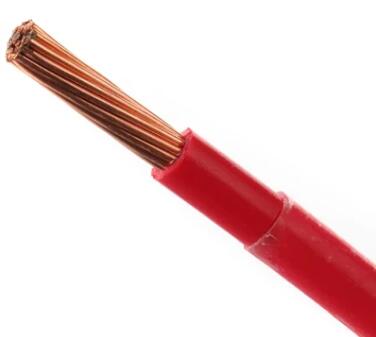Unraveling the Heat Factor: The Impact of Temperature Ratings on Wire Usage
2023-12-26
Introduction:
In the intricate network of electrical systems, the temperature rating of wires emerges as a critical factor that influences performance, safety, and longevity. The ability of a wire to withstand varying temperatures plays a pivotal role in determining its suitability for specific applications. In this blog, we will delve into the importance of temperature ratings, examining how they impact wire usage across diverse industries.
The Basics of Temperature Ratings:
The temperature rating of a wire refers to its ability to withstand and function within a specified temperature range. This rating is crucial because the environment in which a wire operates can expose it to temperature extremes, affecting its electrical conductivity, insulation properties, and overall reliability.
Impact on Electrical Conductivity:
1. Conductor Resistance:
The electrical conductivity of a wire is influenced by its temperature. As the temperature increases, the resistance of the wire typically also increases. This phenomenon, known as temperature coefficient of resistance, is a crucial consideration, especially in applications where precise electrical properties are essential.
2. Current-Carrying Capacity:
The temperature rating directly affects the current-carrying capacity of a wire. Wires with higher temperature ratings can generally carry more current without experiencing excessive heating. This is particularly important in applications where the demand for electrical power is high.
Influence on Insulation Properties:
1. Insulation Integrity:
The insulation material surrounding a wire serves to protect it from external factors and prevent electrical leakage. Temperature extremes can impact the integrity of the insulation. Wires with higher temperature ratings often feature insulation materials designed to withstand prolonged exposure to heat without compromising their protective function.
2. Flexibility and Durability:
In high-temperature environments, the flexibility and durability of wire insulation become critical. Wires intended for use in applications where they might be subjected to bending or movement need insulation materials that remain pliable and resilient across the specified temperature range.
Applications in Different Industries:
1. Automotive Sector:
In the automotive industry, wires with specific temperature ratings are crucial. Engine compartments, for example, can experience high temperatures, and wires must be able to endure these conditions to ensure reliable performance.
2. Aerospace and Aviation:
Aerospace and aviation applications demand wires with stringent temperature ratings. Extreme conditions, including high altitudes and temperature variations, necessitate wires that can maintain their structural and electrical integrity under duress.
3. Industrial Machinery:
Wires used in industrial machinery are often exposed to varying temperatures due to the heat generated by the equipment. Choosing wires with appropriate temperature ratings is essential to prevent overheating and ensure the longevity of electrical connections.
4. Power Distribution:
Wires used in power distribution systems must withstand the heat generated during the transmission of electrical power. Temperature ratings play a crucial role in determining the suitability of wires for specific voltage and current-carrying requirements.
5. Electronic Devices:
Inside electronic devices, wires may encounter elevated temperatures due to the operation of components. Wires with higher temperature ratings are essential to maintain the reliability of electrical connections in these environments.
Conclusion:
In the intricate world of electrical engineering, the temperature rating of wires emerges as a crucial factor that shapes their usage. The ability of a wire to endure and perform within specified temperature ranges directly influences its electrical properties, insulation integrity, and overall reliability. As industries continue to advance, the meticulous consideration of temperature ratings ensures the selection of wires that can withstand the heat—both literally and figuratively—of diverse and demanding applications.



